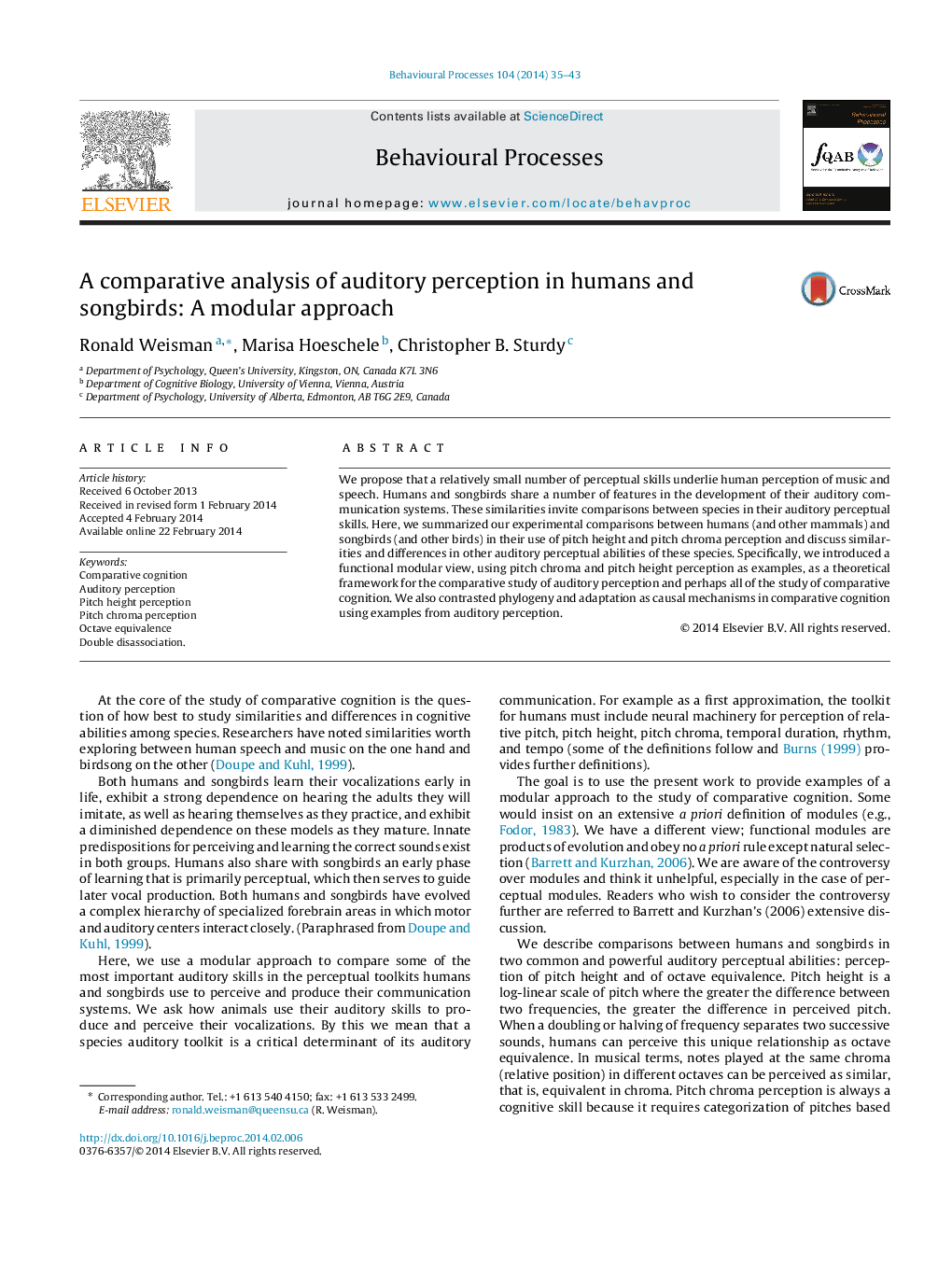| Article ID | Journal | Published Year | Pages | File Type |
|---|---|---|---|---|
| 2426755 | Behavioural Processes | 2014 | 9 Pages |
•Songbirds and humans showed opposite results: with humans good at pitch height and humans good at pitch chroma perception.•Positive controls ruled out trivial methodological interpretations of the results.•Applying a modular approach to note durations and relative pitch in addition to pitch height and chroma perception expanded the discussion.•A modular approach was used to assert the independence of these perceptual abilities.•Differences were attributed to phylogenetic causation.
We propose that a relatively small number of perceptual skills underlie human perception of music and speech. Humans and songbirds share a number of features in the development of their auditory communication systems. These similarities invite comparisons between species in their auditory perceptual skills. Here, we summarized our experimental comparisons between humans (and other mammals) and songbirds (and other birds) in their use of pitch height and pitch chroma perception and discuss similarities and differences in other auditory perceptual abilities of these species. Specifically, we introduced a functional modular view, using pitch chroma and pitch height perception as examples, as a theoretical framework for the comparative study of auditory perception and perhaps all of the study of comparative cognition. We also contrasted phylogeny and adaptation as causal mechanisms in comparative cognition using examples from auditory perception.
